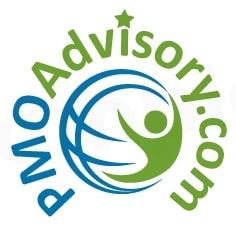….”A solution that I am seeing being tactically deployed by my current client is to put an insulating layer between the Scrum Team and the corporate governance layer. For want of a better term, this is referred to as a Scrum PMO (Project Management Office). The PMO can be a single person, or a small team. The primary purpose of the Scrum PMO is to keep the corporate hassle away from the Scrum Team, so that they can get on with the business of being a high-performing team! There are two main interfaces shown:
- For Governance processes, the PMO represents the project. The overhead of preparing governance materials and attending governance boards falls entirely to the PMO. This can be substantial – including preparation of high-level project plans, scope documents, risk assessments, and whatever else is needed to feed the corporate machine. The PMO does this based on an information exchange with the Product Owner – but in a way that seeks to minimize the impact on the Product Owner.
- For Reporting processes, again the PMO represents the project and prepares all necessary management reports, including status reporting against the high-level milestones. Reporting is based on information received from the ScrumMaster, who should be preparing nothing more than one would normally expect in Scrum (such as burn-down charts).” – Russell Whitworth, excerpted from his article titled, “The Scrum PMO” at PMHut.com, click here to read the article in its entirety. [end]
Intriguing to say the least! PMO Advisory offers courses throughout the year designed for project professionals interested in Portfolio (PfMP), Program (PgMP), Project (PMP & CAPM) Risk (PMI-RMP) Management, and Agile (PMI-ACP) certifications.

